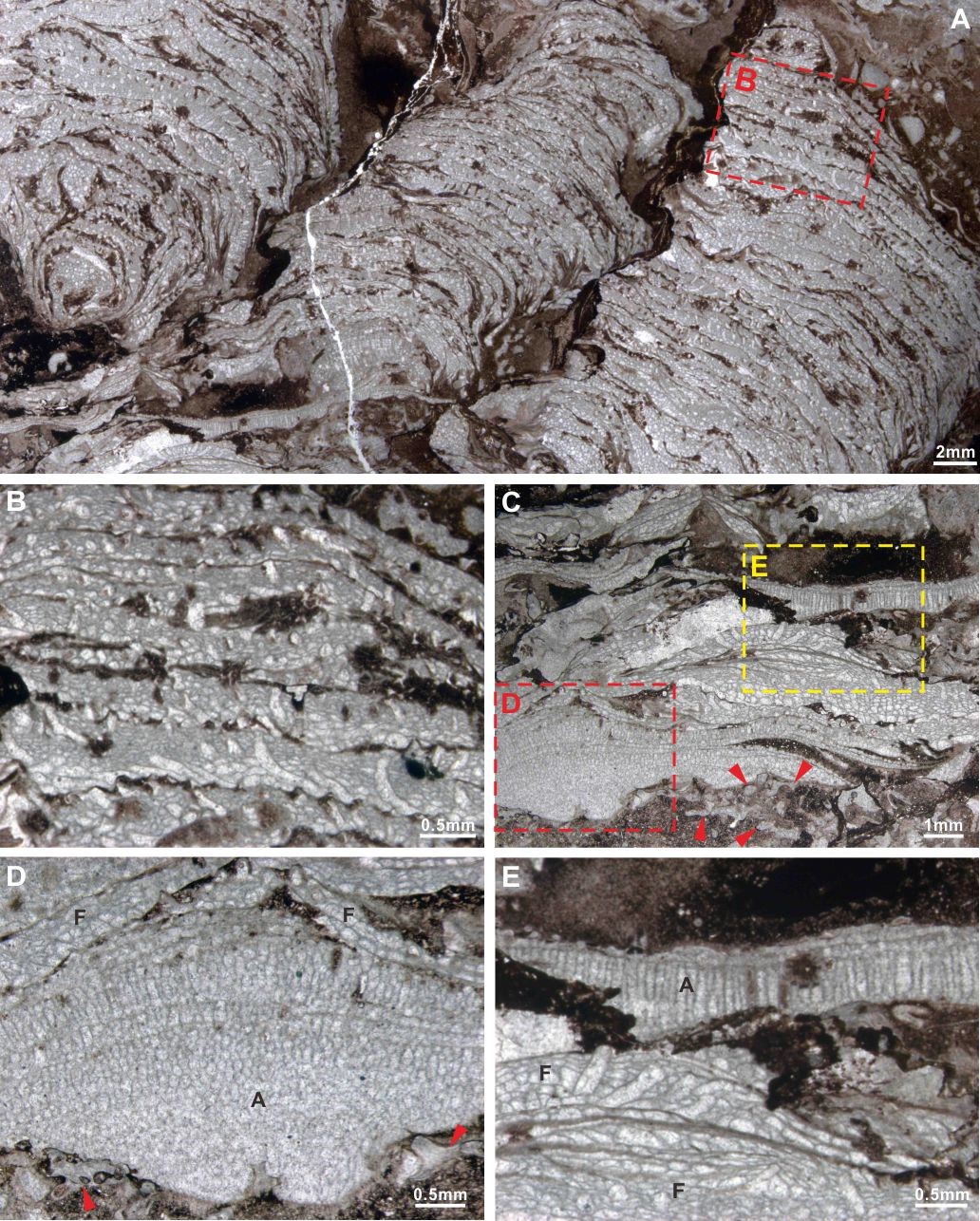Internal waves arise by perturbations that disturb the hydrostatic equilibrium between gravity and buoyancy at the pycnocline. In comparison to tempestites and turbidites, internal waves produce episodic high-turbulence events and remobilize the sediment at the depth where the pycnocline intersects the sea floor. Internal waves, internal tides and their associated currents have long been observed and measured on modern shelves and continental slopes, yet very little is known from the rock record for a long time. Over the past decade, more and more authors noticed the influence of internal waves on the development of heterotroph metazoan reefs through the Phanerozoic.
Recently, Dr. LI Qijian from Nanjing Institute of Geology and Palaeontology, Chinese Academy of Sciences conducted a research on the bryozoan reefs in the lower Hanchiatien Formation, which crop out in the lower part of this formation at the southern tip of Chongqing, Southwest China. These reefs occur as massive argillaceous limestones, varying in size from 1.6 to 2.8 m in thickness and 6 to 16 m in diameter. The reefs are surrounded by gray-green shales and silty shales (Fig. 1). Distinct vertical ecozonation is present, and four growth stages have been recognized, represented by four facies types from bottom to top: (1) auloporid coral-echinoderm-bryozoan packstone/floatstone, (2) fenestrate bryozoan-echinoderm bafflestone, (3) Fistulipora-Asperopora framestone, and (4) Fistulipora framestone (Fig. 2).
Of note, no traces of algae or cyanobacteria (not even thin microbial crusts) have been observed in the Hanchiatien reefs, arguing that the bryozoan reefs developed below the photic zone but in nutrient-rich, agitated water. Such conditions are commonly observed in areas where a pycnocline arrives at a shelf, slope, or ramp. In the studied section, internal waves, probably initiated by tides, propagate landward, shoal, and eventually break at a depth where the pycnocline intersects the seafloor. In tropical mid- to outer-ramp settings, these bryozoan reefs showcase an unusual reef community in heterozoan carbonates, which were probably influenced by internal waves.
This study was financially supported by the National Natural Science Foundation of China, and the Chinese Academy of Science. This study is a contribution to the IGCP-653‘The onset of the Great Ordovician Biodiversity Event’.

Photomicrographs of reef limestones of the lower reef horizon. (A) Fistulipora framestone. (B) Close-up of the box in A showing fistuliporid bryozoans. (C) Fistulipora-Asperopora framestone. (D–E) Close-ups of the boxes marked in D showing different bryozoans. Note that some Asperopora colonies developed on the top of fenestellid bryozoans (red arrows). A = Asperopora, F = Fistulipora.
Download:
